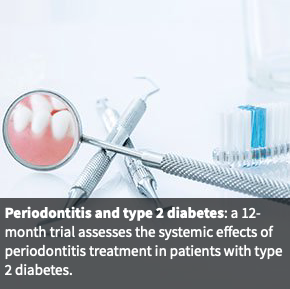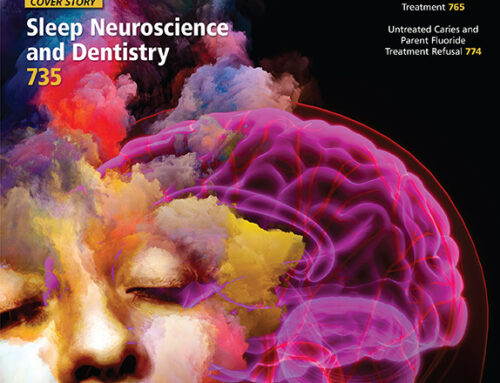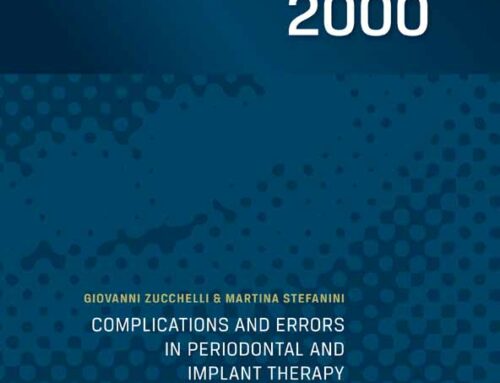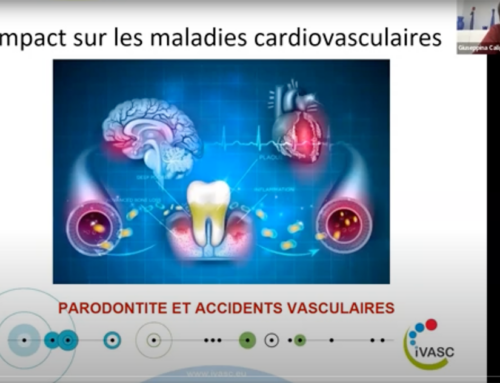La parodontite et le diabète sont bien connus pour avoir une association bidirectionnelle. Les patients atteints de diabète non contrôlé sont sujets à des parodontites, probablement en raison de leur hyperréactivité à une dysbiose buccale et de processus de cicatrisation affaiblis chez eux. Aussi, la parodontite est associée à un mauvais contrôle glycémique, entraînant des complications microvasculaires. Enfin, la parodontite peut également contribuer à des complications macrovasculaires par une inflammation systémique et sa dyslipidémie associée; notamment, la parodontite est un puissant facteur prédictif de la mortalité cardiorénale chez les patients diabétiques.
Le journal « The Lancet Diabetes & Endocrinology » publie les résultats d’une étude de 12 mois réalisée chez des patients souffrant d’un diabète de type 2 et ayant une parondite modérée à sévère. Cette étude montre que les patients dont la maladie parodontale a été prise en charge de façon étendue ont vu leur HbA1c (hémoglobine glyquée, un indicateur de la glycémie et donc du contrôle de leur diabète) était significativement diminuée. Cette étude démontre que le traitement de la maladie parodontale peut améliorer significativement la prise en charge des patients diabétiques de type 2.
Systemic effects of periodontitis treatment in patients with type 2 diabetes: a 12 month, single-centre, investigator-masked, randomised trial
Background
Chronic inflammation is believed to be a major mechanism underlying the pathophysiology of type 2 diabetes. Periodontitis is a cause of systemic inflammation. We aimed to assess the effects of periodontal treatment on glycaemic control in people with type 2 diabetes.
Methods
In this 12 month, single-centre, parallel-group, investigator-masked, randomised trial, we recruited patients with type 2 diabetes, moderate-to-severe periodontitis, and at least 15 teeth from four local hospitals and 15 medical or dental practices in the UK. We randomly assigned patients (1:1) using a computer-generated table to receive intensive periodontal treatment (IPT; whole mouth subgingival scaling, surgical periodontal therapy [if the participants showed good oral hygiene practice; otherwise dental cleaning again], and supportive periodontal therapy every 3 months until completion of the study) or control periodontal treatment (CPT; supra-gingival scaling and polishing at the same timepoints as in the IPT group). Treatment allocation included a process of minimisation in terms of diabetes onset, smoking status, sex, and periodontitis severity. Allocation to treatment was concealed in an opaque envelope and revealed to the clinician on the day of first treatment. With the exception of dental staff who performed the treatment and clinical examinations, all study investigators were masked to group allocation. The primary outcome was between-group difference in HbA 1c at 12 months in the intention-to-treat population. This study is registered with the ISRCTN registry, number ISRCTN83229304.
Findings
Between Oct 1, 2008, and Oct 31, 2012, we randomly assigned 264 patients to IPT (n=133) or CPT (n=131), all of whom were included in the intention-to-treat population. At baseline, mean HbA 1c was 8·1% (SD 1·7) in both groups. After 12 months, unadjusted mean HbA 1cwas 8·3% (SE 0·2) in the CPT group and 7·8% (0·2) in the IPT group; with adjustment for baseline HbA 1c, age, sex, ethnicity, smoking status, duration of diabetes, and BMI, HbA 1c was 0·6% (95% CI 0·3–0·9; p<0·0001) lower in the IPT group than in the CPT group. At least one adverse event was reported in 30 (23%) of 133 patients in the IPT group and 23 (18%) of 131 patients in the CPT group. Serious adverse events were reported in 11 (8%) patients in the IPT group, including one (1%) death, and 11 (8%) patients in the CPT group, including three (2%) deaths.
Interpretation
Compared with CPT, IPT reduced HbA 1c in patients with type 2 diabetes and moderate-to-severe periodontitis after 12 months. These results suggest that routine oral health assessment and treatment of periodontitis could be important for effective management of type 2 diabetes.





